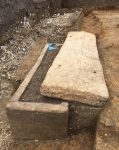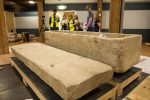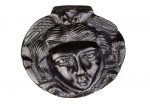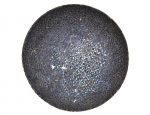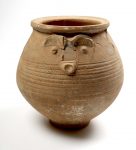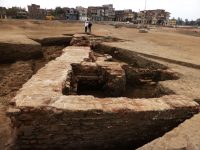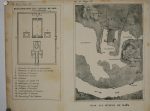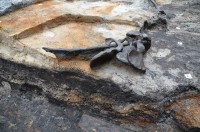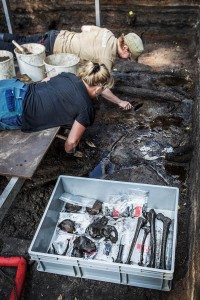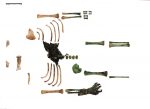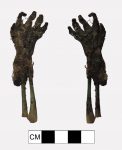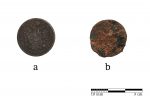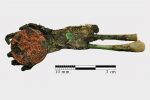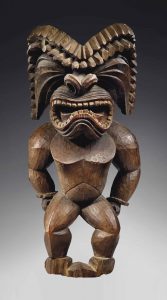 A carved wooden ki’i (a temple image figure) depicting the god Ku has been donated to Honolulu’s Bernice Pauahi Bishop Museum and is now home after at least 80 years of exile. Its past is obscure. The known ownership history starts in the 1940s when it was bought by Pierre Vérité who passed it down to his son, Paris art dealer Claude Vérité.
A carved wooden ki’i (a temple image figure) depicting the god Ku has been donated to Honolulu’s Bernice Pauahi Bishop Museum and is now home after at least 80 years of exile. Its past is obscure. The known ownership history starts in the 1940s when it was bought by Pierre Vérité who passed it down to his son, Paris art dealer Claude Vérité.
The Vérité collection was auctioned at Christie’s Paris in November 2017 with the ki’i as the signature piece gracing the cover of the catalogue. It was purchased at the auction by Marc Benioff, the Chairman and CEO of Salesforce, and his wife Lynne for $7.5 million. They donated it to the Bishop Museum “for the education and benefit of [Hawaii’s] people.”
Hawaii has a profound spiritual and historical connection to this figure and its brethren. The ki’i is 20 inches tall and depicted in warrior pose — knees bent, calves flexed, hands clenched at the back of the thighs. The mouth is open in a grimace shaped like a figure eight, teeth bared and jaw jutting forward. He wears a head crest hanging down at the sides towards his shoulders. These are the classic elements characteristic the Kona style of carving, created by artists in the Kona area of the Big Island during the reign of King Kamehameha I (1782-1819).
The first king of Hawaii as we know it today, Kamehameha unified the islands, previously ruled by different chiefs constantly at war with each other. Before he became king, he served at the royal court of the island of Hawaii under his uncle and then his cousin, under whom he was appointed guardian of Ku, (Ku-ka’ili-moku in Hawaiian, meaning “the god Ku, the island snatcher”) the Hawaiian god of war.
He would maintain a strong identification with this deity as he conquered the fractious islands and fought his way to the throne. Once he was king, Ku temple figures exploded in popularity. These were sacred effigies, representing both the deity and the king, and the carvers were themselves considered to be performing a religious role rather than a purely artistic one.
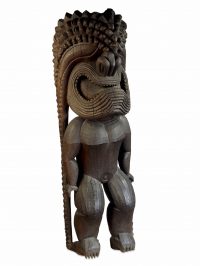 Christie’s experts were amazed by the quality of the piece. It is the kind of thing found only in museums nowadays, so they were thrilled to discover one in a private collection. According to the auction house’s Head of African and Oceanic Art Susan Kloman, it is comparable in craftsmanship and cultural significance to this exceptional ki’i of Ku in the British Museum, except the one in the BM is five times taller (105 inches in height) and is missing his hands. On, and we know how it got there. Missionaries brought it back from their voyage to Kona in 1822.
Christie’s experts were amazed by the quality of the piece. It is the kind of thing found only in museums nowadays, so they were thrilled to discover one in a private collection. According to the auction house’s Head of African and Oceanic Art Susan Kloman, it is comparable in craftsmanship and cultural significance to this exceptional ki’i of Ku in the British Museum, except the one in the BM is five times taller (105 inches in height) and is missing his hands. On, and we know how it got there. Missionaries brought it back from their voyage to Kona in 1822.
The auction house took a minute sample from the statue to radiocarbon date it and to find out which wood it is made of. It’s wood from the genus Metrosideros, or ohi’a wood, a tree found in the mountains of Hawaii and Oceania. The dating results weren’t very precise as they are “wiggles” in the conversion tables from this period, but the two most likely ranges are 1798-1891 and 1717-1780. The stylistic evidence makes the early part of the 1798 range most likely. The Bishop will continue to study the piece and run additional tests in the hopes of discovery a more accurate date.
The image will be a centerpiece in a new exhibition at Bishop Museum opening in February 2019, following the close of the Hawaiian season of peace known as Makahiki. Museum researchers will continue to study the carving while planning for the exhibition, which will explore the multiplicity of stories surrounding the ki’i. In addition, the Museum plans to hold a carving workshop and symposium prior to the exhibition, during which contemporary artists, scholars and the community will engage with the ki’I and other images in the Museum’s collections to increase awareness, scholarship and understanding of Native Hawaiian history, culture and practices.
